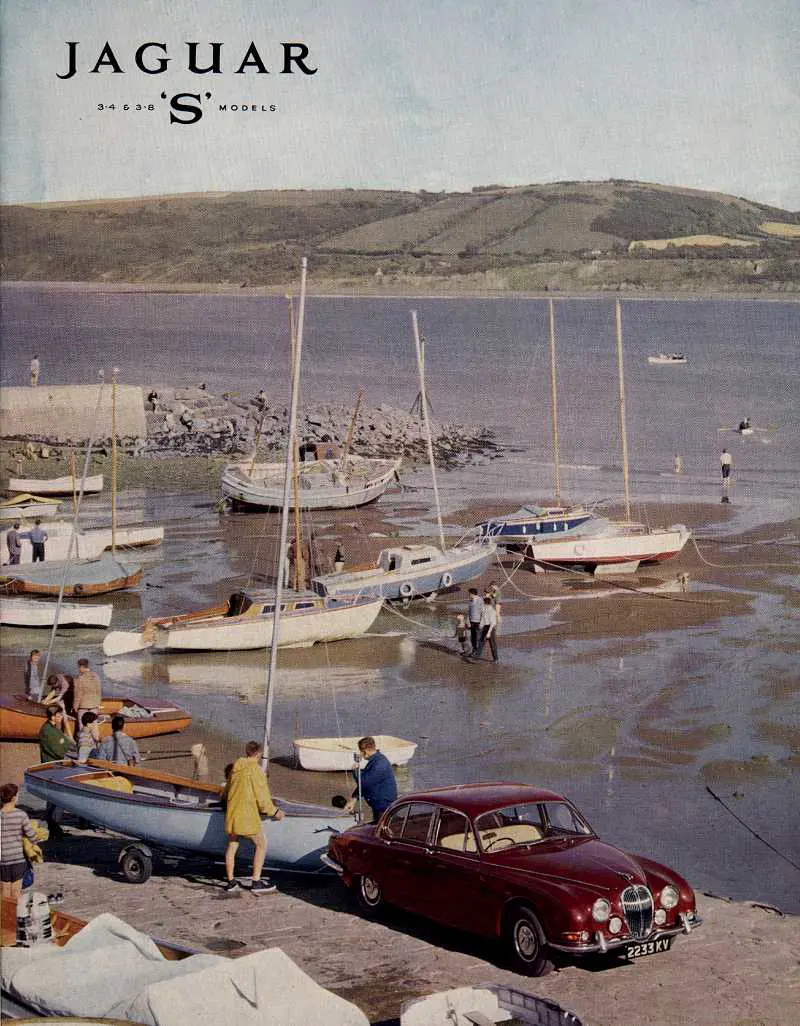THE JAGUAR S-TYPE AT SIXTY
27 October 2023
Sixty years ago, Jaguar introduced a new model for the driver who lived in a world of expense account steak and scampi. Seeing an S-Type in the driveway would show the neighbours that you had reached ‘the top’ and induce envy in all Ford Zodiac owners.
Jaguar commenced ‘Project Utah Mk.3’ as a Mk.2 replacement, but shortly before its debut in October 1963, Sir William Lyons decided to keep the older model in production. The S-Type used the Mk.2’s central hull, but a slightly elongated roofline allowed for greater rear-seat headroom. At the front, there were recessed foglights and hooded headlamps, while the elongated boot accommodated twin fuel tanks and independent rear suspension from the Mk. X.
Browns Lane billed the S-Type as “the latest development of one of the world’s most successful cars”. Inside, the split-bench front seats boasted reclining backrests, and an under-dashboard map tray replaced the Mk. 2’s rear picnic tables to ensure more legroom for back seat passengers. Extras included a heated rear window, Burman power steering, overdrive, a radio, wire wheels, and Borg Warner DG transmission.

Engine choices were the familiar 3.4-litre and 3.8-litre plants, sales of the latter commencing first. The 3.4S became available in early 1964 and was never available in the all-important US export markets or to the British automotive press. Motor Sport considered that “we had the feeling that this Jaguar is only an interim model until something exciting is revealed”, but Motor thought the IRS alone on the 3.8S Automatic was worth the “£200 price difference” over the Mk.2. Meanwhile, John Bolster wrote in Autosport that “this car will cause a lot of re-thinking among the manufacturers of luxury vehicles”.
By late 1964, an all-synchromesh unit replaced the Moss gearbox, and in September 1967, Jaguar fitted the S-Type with horn grilles, Ambla instead of hide, trim, and less opulent carpets. 12 months later, the XJ6 replaced the S-Type, which enjoyed a long afterlife as the screen gangster’s reasonable-priced getaway car of choice: Brannigan, Callan, and Villain were three such films, and who could forget the pool of down-at-heel S-Typed in The Sweeney – especially in the Stoppo Driver episode: https://www.youtube.com/watch?v=X_POqEL8q24
Fortunately, several police forces used the S-Type, starting with Sussex in 1965. The London Met. commissioned some 266 patrol vehicles, both as white-liveried manual versions for traffic duties and black automatic Area Cars. At Browns Lane, the capital’s Police Specification Jaguars even had a dedicated production line. There were said to be over 80 differences from the standard cars, including the stripped-specification cabin and a covered handbrake button; drivers were prone to catching the lever with regulation boots. Met. S-Types had two-tone horns and a bell, and they favoured the 3.4-litre engine over the 3.8-litre unit due to perceived reliability problems. Nor did the force use overdrive on their Traffic Cars – one mantra was “You don’t catch robbers with overdrive!”’
And to end this tribute, here are two of this writer’s favourite S-Type screen moments. The first is from 1967’s Robbery, in which a mocked-up police S-Type from Action 99 Cars and driven by the famed stunt expert Joe Wadham pursues the hoods’ 3.8-litre Mk.2. Steve McQueen was so impressed by the chase that Robbery’s director Peter Yates went on to helm Bullitt. The second is 1965’s Life at the Top, as the ultra-sauve Laurence Harvey pilots his 3.8S over Rombalds Moors in moody black and white.
As the press statement put it: “Jaguar has never bowed to the passing whims of fashion, indeed it has set its own unique trends and styles which are instantly recognisable anywhere in the world as ‘Jaguar’”.
